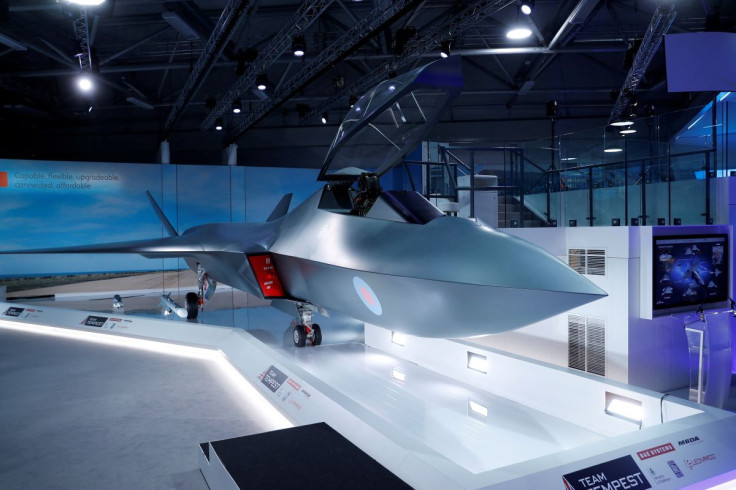Britain To Work With Japan On New Fighter Jet Programme

Britain said on Monday it was collaborating with Japan and existing partner Italy on its next-generation fighter jet programme, with joint concept analysis expected to lead to decisions on deeper partnerships by the end of the year.
Reuters on Thursday reported that Britain and Japan were close to an agreement to merge their next-generation Tempest and F-X fighter jet programmes, with the two countries aiming for a deal on a new joint project by year-end.
British Prime Minister Boris Johnson said his government was backing aviation and technology.
"I am a passionate believer in the potential of our burgeoning partnership, not just with Italy, but with Japan," he said at the opening of the Farnborough Airshow.
Britain and its lead defence partner BAE Systems said a Tempest demonstrator would fly within the next five years, becoming the country's first combat air demonstrator since the Typhoon nearly 40 years ago.
It will be a piloted supersonic aircraft testing a range of new technologies including integration of stealth compatible features, BAE said at the show.
Britain wants the new fighter to be in service by 2035 and, following its departure from the European Union, is pursuing a programme separate from a Franco-German-Spanish plan.
The joint concept analysis with Japan and Italy will explore potential partnership options with the UK's Future Combat Air project, Britain said, with decisions expected by the end of the year.
Like the UK, both Japan and Italy operate F-35 fighter jets and the nations have undertaken joint exercises together.
Richard Berthon, UK Director, Future Combat Air, said Britain was talking to "serious countries with serious ambitions to invest".
He said talks with Japan were "going better than to plan".
"The extent of the alignment we found with Japan, both on the military side, on the engineering side and on the investment side is fantastic," he told reporters at Farnborough.
"We are exploring what the level of ambition and the scope of our cooperation will be," he said.
SIXTH GENERATION FIGHTER
Tempest has a government budget of 2 billion pounds ($2.4 billion) until 2025. Other partners include Leonardo UK, MBDA and Rolls-Royce.
BAE Chief Executive Charles Woodburn said taking one of the concepts for the fighter jet from a digital design, with had already "flown" 100 hours, into a physical aircraft was "a big step" for the company.
Tempest is one of a competing series of sixth-generation fighters in development globally. They have advanced digital capabilities, in areas such as AI and cyber warfare.
A combination between Japan's F-X programme, led by Mitsubishi Heavy Industries (MHI), and Tempest would be the first time Tokyo has sought a non-U.S. partner for a large military programme, and would deepen security ties between the two close U.S. allies.
U.S. defence group Lockheed Martin Corp had been expected to help MHI build the F-X, which Japan wants to deploy in the 2030s to counter advanced fighters from China.
Tempest is one of two European initiatives for the next generation of air power alongside the Franco-German-Spanish Future Combat Air System, currently mired in divisions between partners Airbus and Dassault Aviation.
Berthon said Tempest had a "very aggressive" timeline to meet and so was focused on a small range of partners.
In reference to the rival European scheme, he said he recognised the "complexities that they're grappling with".
"I think we have a really solid foundation and we're open to conversations (with other partners) as time goes by," he said.
Britain and Sweden have also signed a memorandum of understanding to work on joint combat air development and acquisition.
Berthon said Sweden would remain "a very close partner" within future combat systems and technologies", but noted there had been a "radical change in their strategic environment" that was likely to impact the country's threat assessment and budget, referring in part to Sweden's application to join NATO.
© Copyright Thomson Reuters 2024. All rights reserved.





















